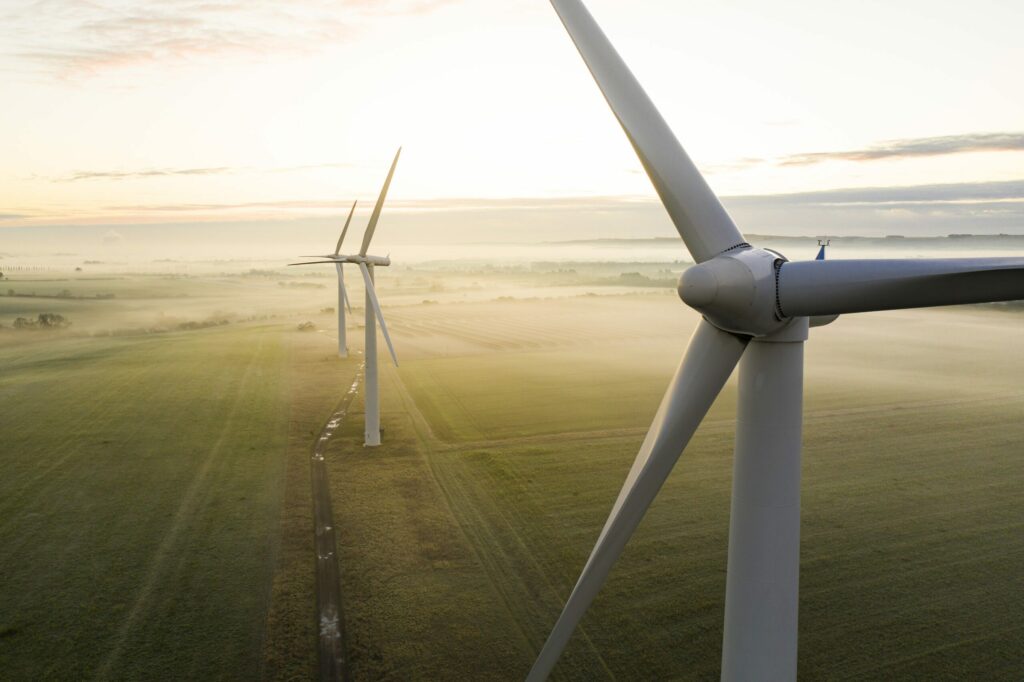
De-carbonising The Supply Chain
Solving one of the logistics
industry’s biggest challenges
The people in the know say the world is getting hotter. Weather is becoming more extreme, temperatures are rising and polar ice is melting, all of because of climate change. And at the UN’s COP26 conference held in Glasgow in late 2021, world leaders agreed to take steps to reduce the impact of humans on the environment, to ensure that by the middle of the century, the temperature has risen no more than 1.5°C. But what impact does this have on the logistics industry? And why are we making climate change such a priority?
Traditionally, logistics businesses move goods using vehicles powered by fossil fuels – primarily diesel. HGVs, vans, trains, planes and even cargo all rely on it to move goods from A to B. But the science tells us fossil fuel usage leads to harmful emissions, which destroy the earth’s atmosphere and allow sunlight to drive up the temperature.
So the ambitious targets set by world leaders at COP26 are definitely needed. We all need to work together to negate the rise in greenhouse gasses, like Carbon Dioxide, so that we no longer add more than they remove from the environment. That’s a target called ‘Net Zero’, and it’s one the logistics industry has committed to achieving – by 2040!
So how is logistics rising to the challenge? How is this generation of industry leaders going to transform our businesses, supply chains and processes to switch away from diesel road vehicles over the next two decades?


Let’s start with the vehicles.
Vehicle designers and engineers are working on alternatives to fossil fuel power, finding ways for the next generation of transportation to deliver the same range at a cost that works. Because electric logistics vehicles need larger batteries than domestic electric cars, we’re working closely with motor manufacturers to develop power sources that can enable hundreds of miles’ travel on a single charge. So if you’re a creative thinker, or a problem solver, this could be the job for you!
But there are other challenges. Worldwide COVID-19 lockdowns have resulted in a severe shortage of microchips – which new vehicles need to operate. Software engineers are working round the clock to identify and develop alternative solutions to work around the problem and give vehicles the range which they need – ultimately, their solutions won’t only benefit logistics businesses, but the wider motor industry too.
Another challenge comes in choosing an alternative fuel. Electricity, hydrogen and biodiesel (made from recycled cooking oil) all have their place. But how will that fuel make it to the customer? Developers are working on a nationwide network of refuelling stations for HGVs, as well as universal attachments to charge lorries, but planning, construction and strategy is vital to make it all happen.
There’s still lots of work to be done finalising the technology these changes will need, and the stakes couldn’t be higher. We’re already investigating how ships and planes could run without fossil fuels, which serves up a huge set of challenges. And on a local level, new clean air zones are being introduced in towns and cities around the country, which means that logistics businesses have to find alternative ways to deliver to their customers when HGV access isn’t an option. The use of cargo bikes, teams of scooter riders and even skate boarders is already underway, a practical way to get the delivery to its final destination with no emissions at all. And of course, there are plenty of new roles involved in coordinating these teams, just as with an HGV fleet – it’s the ideal job for anyone who enjoys solving complex puzzles and dealing with people.

Across our entire industry, developers are modelling solutions, engineers are creating new tech, and planners and strategists are working on new ways to move goods – all collaborating to reach Net Zero by 2040. If you’ve got the skills and passion to join them, our industry needs you too!
